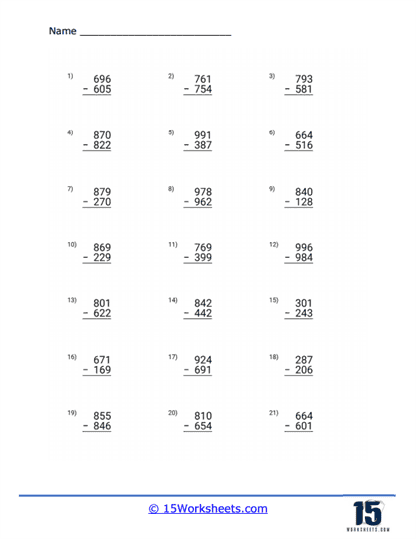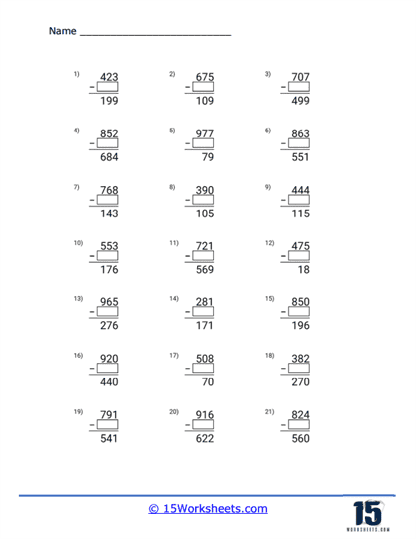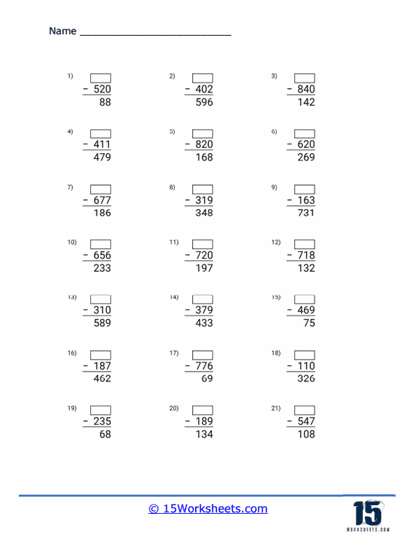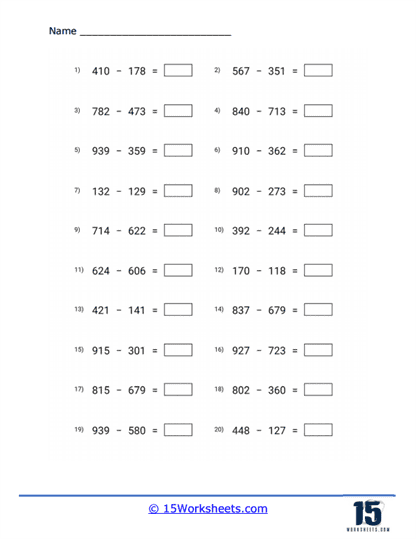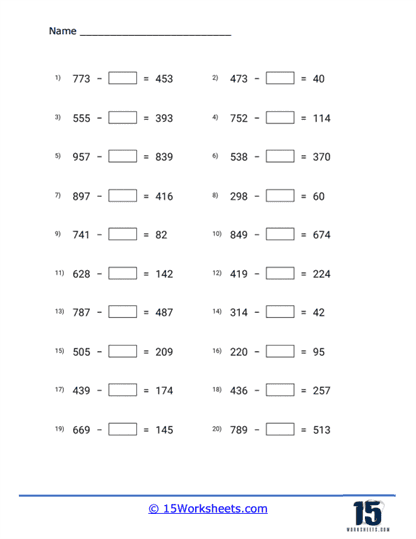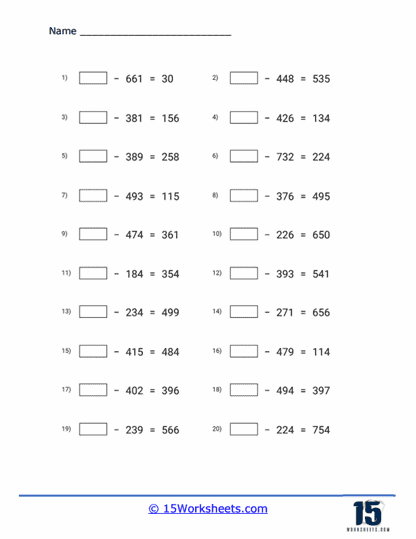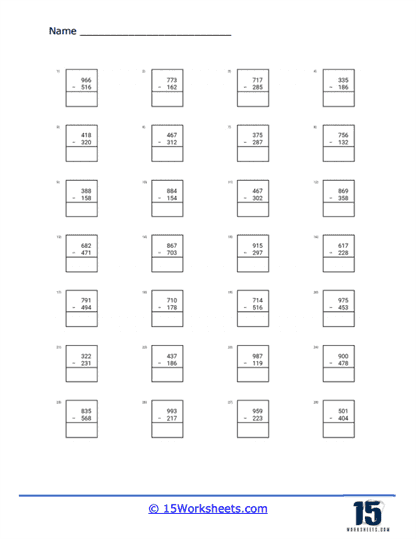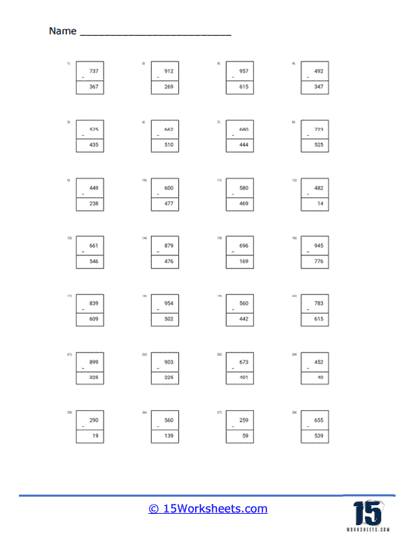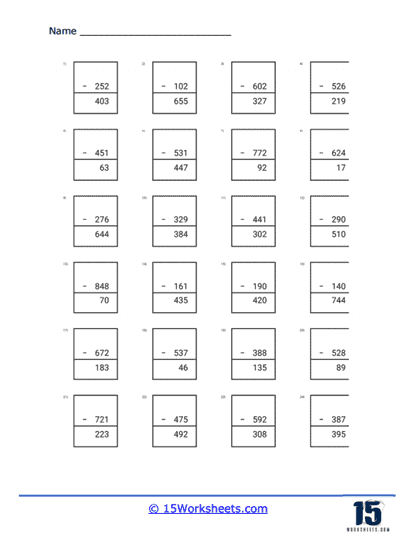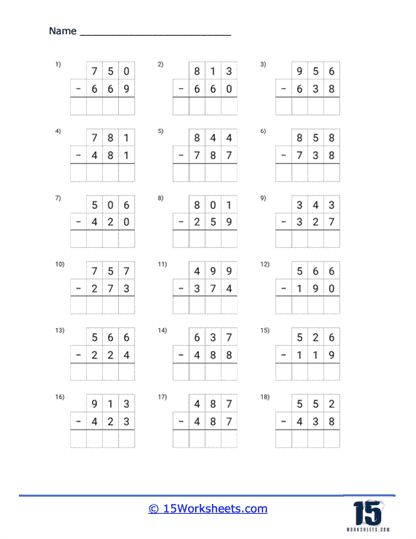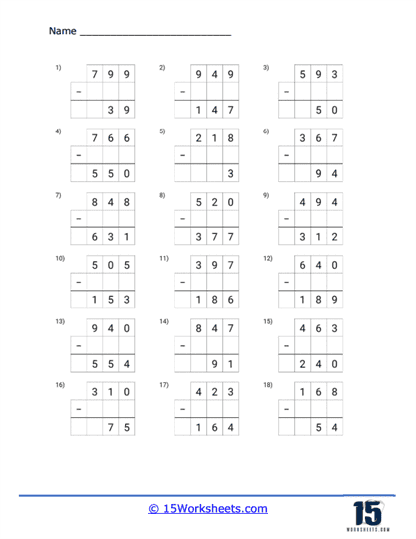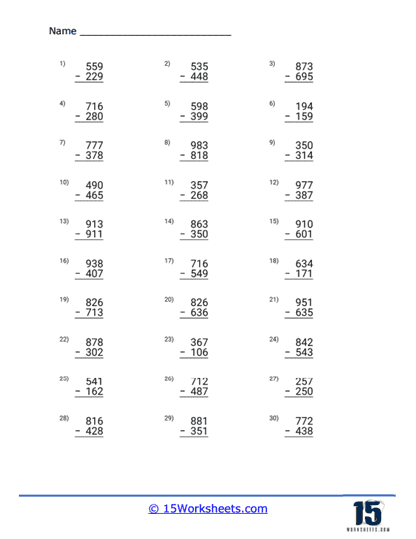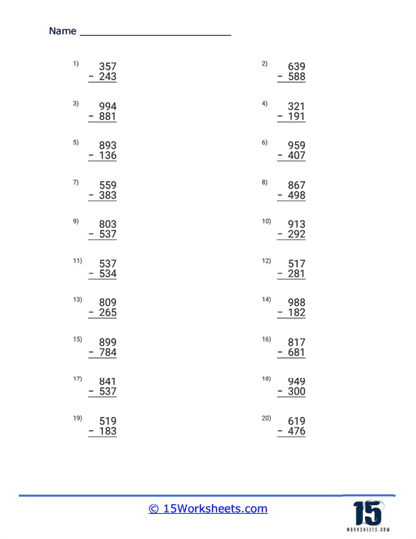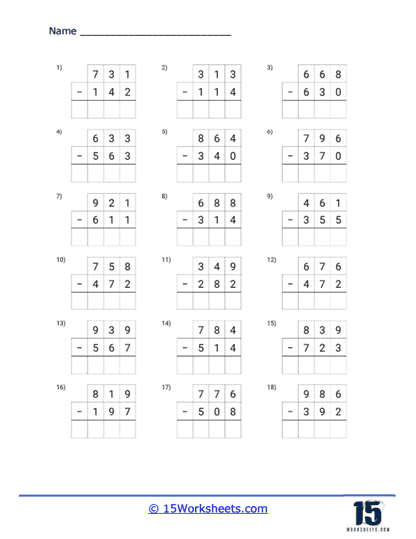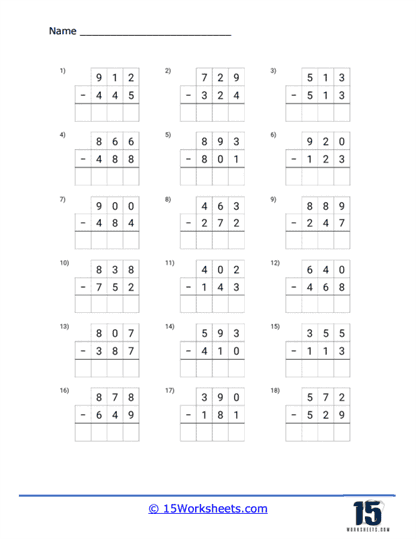3 Digit Subtraction Worksheets
About These 15 Worksheets
Triple Digit Subtraction Worksheets are tools designed to assist students in mastering the concept of subtracting three-digit numbers. These worksheets present numerous subtraction problems that involve numbers in the hundreds place value. They are used to reinforce the principles of subtraction and help you develop proficiency and speed in solving triple-digit subtraction problems.
Before diving into triple digit subtraction, there are several skills you should already have under your belt. Firstly, you need to understand basic subtraction with smaller numbers, such as single-digit or double-digit numbers. These foundational subtraction skills are very important because they are the building blocks of more complex subtraction problems.
Additionally, you should understand the concept of “place value”. Place values tell us what each digit in a number represents. In a three-digit number, there are hundreds, tens, and ones. For instance, in the number 123, the ‘1’ stands for one hundred, ‘2’ stands for twenty, and ‘3’ stands for three ones.
You also need to know about ‘borrowing’ or ‘regrouping’. When you subtract larger numbers and the top number (the minuend) is smaller than the bottom number (the subtrahend), you need to ‘borrow’ from the next place value. For example, if you’re trying to solve 301 – 145 and you start from the ones place, you can’t subtract 5 from 1. So you ‘borrow’ 1 from the tens place, turning it into 10, and the ‘0’ in the tens place becomes a ‘9’. Now, you can subtract 5 from 11.
Triple digit subtraction worksheets provide a structured and step-by-step way to practice and learn subtraction. The repetition and variety of problems on these worksheets give you many opportunities to practice and reinforce your understanding. By solving these problems, you gradually increase your comfort level with triple-digit subtraction.
These worksheets also help improve your problem-solving skills. Each subtraction problem is like a small puzzle that needs to be solved. You need to identify whether borrowing is necessary, perform the subtraction for each place value, and remember to reduce the value of the digit from which you borrowed.
Working with these worksheets can also enhance your number sense, which is your understanding of how numbers work and relate to each other. This is developed as you continue to subtract large numbers, carry over, and borrow. For instance, when you borrow from a higher place value, you’re using your number sense to understand that you’re not really taking away value, but just rearranging it to make the subtraction possible.
The consistency of practicing with worksheets helps in developing speed and accuracy. As you work through more and more problems, you’ll start noticing that you’re able to solve them faster, and with fewer mistakes. This is especially important because as you advance in your studies, you’ll need to solve problems quickly and accurately, often under timed conditions.
How to Solve Triple Digit Subtraction Problems
Solving triple-digit subtraction problems can seem challenging at first, but once you understand the steps and get some practice, it will become a lot easier. Here’s a step-by-step guide on how to solve these problems:
Step 1) Line Up The Numbers Correctly
The first step is to ensure that the numbers are correctly lined up. Write the larger number (the minuend) on top and the smaller number (the subtrahend) below it. Make sure the ones, tens, and hundreds place values line up vertically.
Step 2) Start Subtracting from The Ones Place
Start subtracting from the right-most digit, which is the ones place. Subtract the lower digit from the upper one.
Step 3) Check if You Need to Borrow
If the lower digit is larger than the upper one, you need to borrow from the next column (the tens place). If you can subtract without needing to borrow, move on to the next step.
Step 4) Borrow if Necessary
To borrow, reduce the digit in the tens place of the upper number by one, and add ten to the ones place of the upper number. Now, subtract the lower ones digit from the new upper ones digit.
Step 5) Subtract the Tens Place
Move to the next column, which is the tens place. Subtract the lower digit from the upper one. If the upper digit is smaller, you’ll need to borrow from the hundreds place.
Step 6) Borrow for the Tens Place if Necessary
Similar to step 4, to borrow, reduce the digit in the hundreds place of the upper number by one and add ten to the tens place of the upper number. Now, subtract the lower tens digit from the new upper tens digit.
Step 7) Subtract the Hundreds Place
Finally, move to the hundreds place and subtract the lower digit from the upper one. If your numbers were in the thousands and you needed to borrow, you would follow the same procedure.
Step 8) Write Down Your Answer
After subtracting the hundreds place, write down your answer. This should be a three-digit number.
Step 9) Check Your Work
Use addition to check your work. Add your answer to the lower number (the subtrahend). You should get the upper number (the minuend) if your subtraction is correct.

